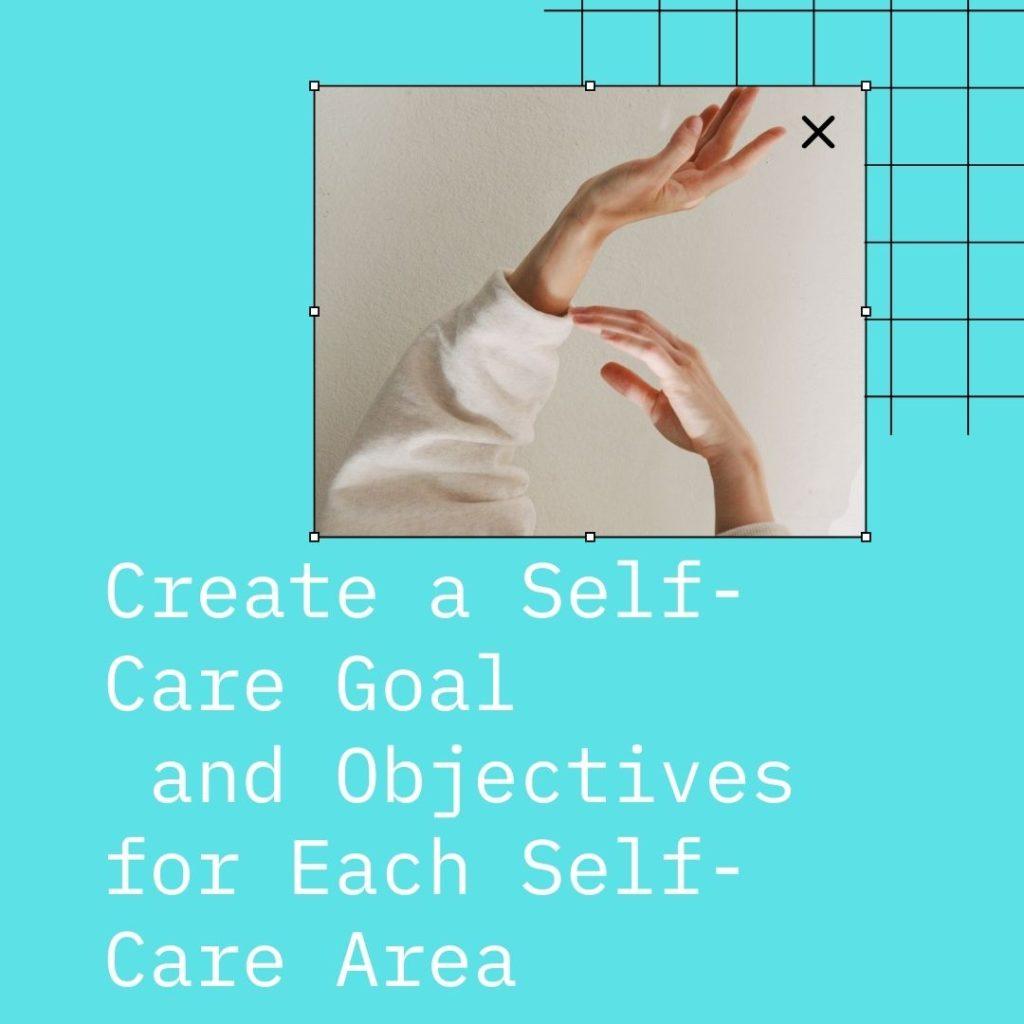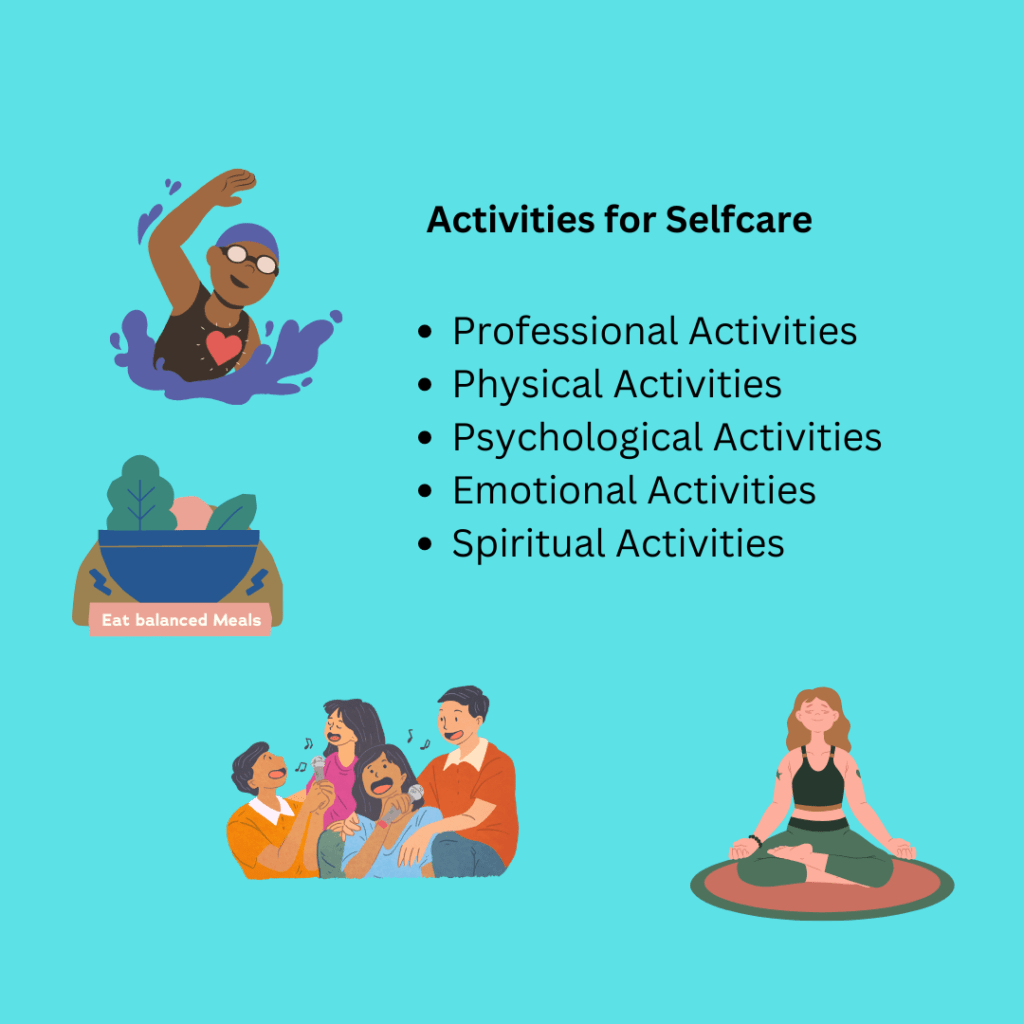Self-care is a set of functions, approaches and activities deliberately initiated by an individual to manage and improve his/her overall health. Practicing self-care means you take individual charge and the responsibility to manage and improve your emotional, physical, psychological, spiritual and professional health.
Practicing self-care is a very important task especially for working women and mothers as it increases work productivity, improves stress management, hones parenting skills, and improve the relationship with self and others.
Read: The Benefits of Practicing Self-care to a Working Mom
In order to effectively practice self-care, you need a personalized individual self-care plan. An effective self care plan will enlarge your curriculum of knowledge, skills and attitudes to support your wellbeing in the sustainable long run.
A self care plan details your overall goal, and objectives on each domain of self-care and the strategies and approaches that will be used to achieve them. It is a thoughtfully constructed and intentionally engaged guide that will guide you into promoting your health and wellbeing.
The main steps of creating a self-care plan include creating your overall self-care goal, objectives, activities and methods, identify how to overcome obstacles, and eventually practicing your plan.
Simple Steps to Creating a Self-care Plan
The journey of creating a self care plan is divided into steps. A good self-care plan is one that follow these steps and they include;
Step 1: Create your Overall Self Care Goal
The first step in creating a self-care plan is by crafting your overall goal. Your goal is simply what self-care means to you. Ask yourself what do I want to achieve from practicing self-care? How do I intend to practice self-care to impact me?
To answer these questions you need to have an awakening of the need for self-care. You will then be able to understand your personal needs now and how meeting those looks like.
For instance, my self-care overall goal as working mom is to have better immunity, reduce stress, improve relations with others and live a high-quality life. My self care plan is then guided by this important step.
Read: The Benefits of Practicing Self-care to a Working Mom

Step 2 : Create Objectives for each Domain of Self-Care
There are six different areas or aspects of self-care that you need to include in this step of creating a self care plan. They include emotional, physical, psychological, spiritual and professional health self-care dimensions .
Once you have set your overall self care goal you need to set objectives for each area of self-care. This is important as it will culminate into you achieving your overall self care goal.
For instance, my emotional health self care objective is to gain resilience in managing extreme emotions through self care. Your physical health objective could be to improve your immunity and energy levels through self care.
Step 3 : Design Self-care Activities and Methods
Once your self care goals and objectives are in sight, think of how you will get there. It is a very delicate step of creating an effective and practical self care plan. For each domain ask yourself what can I do to achieve that? What activities will help me achieve that?
Think of self-care ideas, strategies, hobbies, approaches, activities and tasks that will directly lead you to your goal. All these elements are very important in self-care as they are the means to how you meet your self care goals and objectives set above.
For instance, if your objective is to improve your immunity and energy levels, your self-care activities can include eating a better diet, exercising, drinking enough water and getting enough sleep.
Read: Simple and Practical Hobbies for Working Moms
Step 4 : Identify your Self-care Obstacles and How to Overcome Them
In your journey of practicing self-care, you will have several challenges and limitations. You must overcome this to reach your goal and objectives for self care. Ask yourself; what can prevent me from reaching my goals? How can I overcome them?
Some challenges and limitations that can prevent you from effectively practicing self care include time-wasters such as too much internet or phone time, people that make you feel guilty and unappreciated among others.
Identify what you can do to overcome these challenges to effective practicing self-care. For me this includes cutting toxic people off my life.
Step 5: Practice Self-care
This is the most crucial step of your self care plan. At this point, your plan is ready and you need to implement it by incorporating it into your daily life. To do this, allocate adequate time and resources for your plan on your calendar.
Make sure that your newly created self care plan is sufficiently incorporated into your daily life. As you create your weekly or monthly chart for your family and work, include all these self-care activities.
Read: Simple and Cheap Treat Ideas for Working Moms
Evaluating your Self Care Plan
Once you start practicing self-care, it is important for you to track your progress with time. Doing so is important to evaluate how you are meeting your over all goal and objectives for self care that you initially set.
Periodically look at how far your self care goal is into accomplishing. You can do this weekly, twice a month or monthly. Use your initial level of self-care to compare where you are at that particular time.
As you evaluate your self care plan, identify what elements or self care activities that are working and which are not working. Once you identify these crucial parts of your self care plan, keep what is working and change what is not working. You are allowed to be creative with your self care plan and try out new methods.
We have gone through all the steps of creating a personalized self-care plan. Go ahead and create your self-care plan. Below I have shared my own personalized self-care plan that you can use as a template.
Example of a Personalized Self-Care Plan/Template
Overall Self Care Goal Example
Enhance my health and wellbeing, manage stress, and maintain professionalism in my career. Learn to identify activities and practices that support my wellbeing as a professional and help me sustain positive self-care in the long-term.
1. Professional Activities – Examples for Self Care Plan
- Constantly consult with my supervisor on my professional needs
- Join a peer-support group
- Set limits but be open to new relations with other workers
- Update myself on my profession developments
- Attend professional development programs

2. Physical Activities- Examples for Self-Care Plan
- Get at least 8 hours of sleep
- Aim for a well-balanced diet
- Exercise – swim thrice a week
- Drink enough water, avoid alcohol
3. Psychological Activities- Examples for Self-Care Plan
- Keep a personal reflective journal
- Partake in my hobbies – reading, biking
- Work-life balance- take family time away from work
- Find some “me-time” daily
- Create a circle of supportive friends and family
4. Emotional Activities- Examples for Self-Care Plan
- Find supportive new friends
- Keep a daily record of good deeds I have done
- Join a sport after work hours
- Spend time with my family and friends
- Talk to a therapist
5. Spiritual Activities- Examples for Self-Care Plan
- Venture into yoga and meditation
- Start nature walks
- Go to church
Self Care Plan Challenges – Examples for Self-Care Plan
- Lack of enough time
- Low motivation
- Toxic people
Self Care Negative Strategies do I Need to Avoid
- Feeling guilty and beating myself for failure
- Feeling lowly motivated from lack of support by other people
If I Implement my Plan, How Might I Feel? Example of Benefits of Self Care
Happier, healthier, more positive, and more in control of how I live my life and associate with others at work and outside work.



